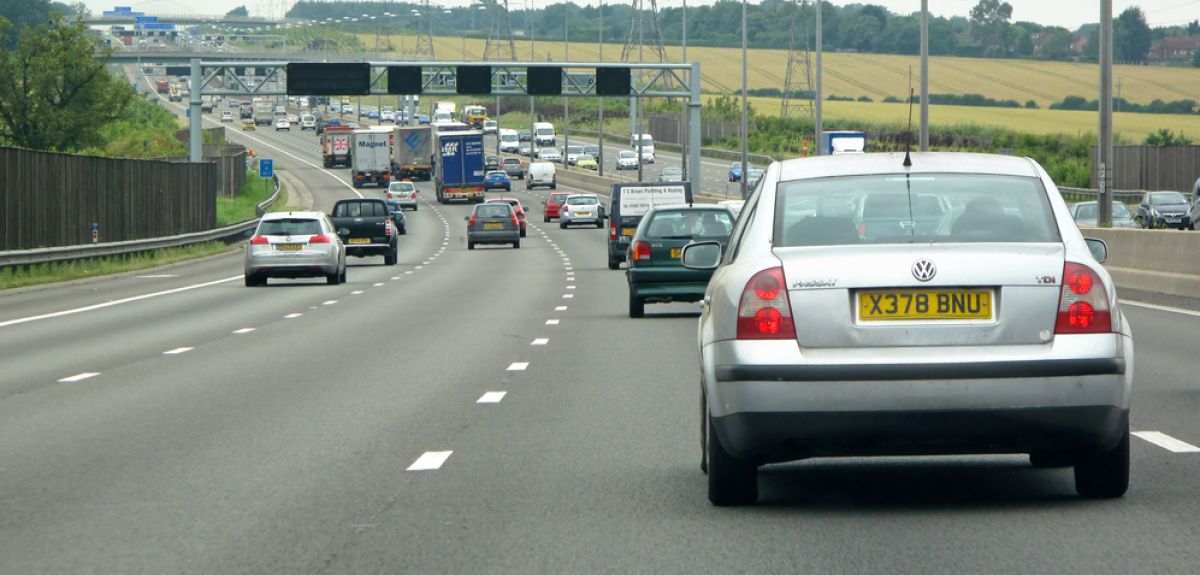
Image credit: motorway traffic courtesy of Shutterstock
Home counties blamed for car pollution in the southeast
A new Oxford University study says while transport policies inside greater London are helping reduce carbon emissions, the real environmental problem is just beyond the M25 motorway because people living around London depend so much on their cars.
The research, published in the journal Transport Policy, lays out the need for a regional strategy in the southeast to tackle the environmental, transport and planning challenges. If business continues as usual, it says carbon emissions targets will not be met ‘by a large margin’.
The study uses existing data to measure and compare aggregate levels of greenhouse gases from car journeys made inside and outside of greater London, based on governmental household travel surveys (conducted over 2008-09), in which residents reported daily mileage and transport choices (in greater London and the southeast) and data on carbon emissions for the average car.
The researcher's statistical model finds that in 2012, the population of 12 million living in the southeast but outside greater London produced over three-quarters of the car emissions in the region. It calculates around 77% emissions produced by southeast residents outside London compared with just 23% of emissions due to car journeys made by those living in greater London (with residents numbering around 8 million in 2012). The model also finds that in the southeast outside greater London, the average daily car mileage per person was 15.6 miles as compared with 7.7 miles for residents in the capital itself.
The paper by Caralampo Focas, a Senior Visiting Research Associate at Oxford University's Transport Studies Unit, comments that targets for tackling carbon emissions announced by the Mayor of London, Boris Johnson, in 2010 are unlikely to be successfully met. The aim is to reduce traffic emissions in the greater London region to 1.8 million tonnes by 2025, but the study calculates that emissions are likely to be closer to 4.4 million tonnes by 2020 if business continues as usual.
Neighbouring authorities outside of greater London do not have a regional target but rather a patchwork of different targets and approaches that largely follow those set nationally, the study comments. It finds that national targets are unlikely to be met either – by a long way.
The paper compares London with New York as capital cities that have both been widely recognised for their apparent success in introducing initiatives to tackle traffic emissions. Yet it finds that both also have large zones outside the main urban centres where populations produce the bulk of greenhouse gases through relying so much on private cars. This unsustainable situation is being largely ignored by policymakers, the paper suggests. The US statistical model, based on similar domestic survey data as the UK case study, calculates that in the Tri-State Area around New York City, cars produced 87% of carbon emissions compared with just 13% in the capital city itself in 2012.
Study author Dr Caralampo Focas said: 'London and New York have been studied as role models for other cities in terms of land use and transport policies. Yet this approach neglects to look at the bigger picture. Both capital cities are surrounded by sprawling developments that extend well beyond the main urban centres where residents are heavily reliant on their cars and often have to drive to their nearest shop or other facilities.
'Neither London nor New York has a regional planning or transport authority covering the entire region. These findings suggest that policymakers should view cities in their wider regional context given this is where the greatest use of energy and greenhouse gas emissions is now concentrated.'
The report, 'Travel behaviour and CO2 emissions in urban and exurban London and New York', is published in the journal Transport Policy.
 Learning centre celebrates 10 years working with young people in Oxford
Learning centre celebrates 10 years working with young people in Oxford
 Expert Comment: The point of the pope. Why His Holiness matters (even if you’re not a Catholic)
Expert Comment: The point of the pope. Why His Holiness matters (even if you’re not a Catholic)
 Child heart disease found to be more likely if mother has anaemia during pregnancy
Child heart disease found to be more likely if mother has anaemia during pregnancy